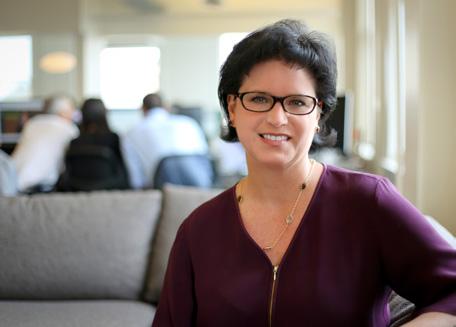
2 minute read
De-Risking Post-Trade
The rise of tokenized and digitally-native securities, combined with smart contracts and distributed ledger technology, creates a singular opportunity. How will post-trade change, particularly clearing, settlement and safekeeping?
The ability to complete process steps at the exact same moment creates the conditions to drive efficiency and remove risk in clearing and settlement, lowering expenses and capital costs.
• Atomic settlement removes the delivery and payment delta. Complex transactions are broken into atomic components that settle simultaneously, with all conditions satisfied for the transaction to complete. The result? Less margin or credit, and reduced capital requirements.
challenges with multiple intermediaries and sequential processes across time zones.
• Global custodians have direct, often fiduciary, liability over client assets, with associated risk and capital implications. Yet they lack direct control over those assets, which sit with the local custodian and are held in-country at the CSD/central bank.
• Even sophisticated providers have a patchwork of domestic and global systems. Assets move in and out of control with multiple cash and collateral accounts on different ledgers. Transfers aren’t seamless and it’s difficult to deploy cash or collateral nimbly to meet obligations.
• Between trade and settlement date, custodians step in to support clients with cash advances or intraday liquidity.
With digitization, these risks can be removed.
PRIVACY:
Unlike any other enterprise blockchain, Daml's privacy model extends to the sub-transaction level and distributes data only to entitled stakeholders, as required by data privacy regulations.
Multiple ways to access
INTEROPERABILITY:
Daml can be deployed across many blockchains and traditional databases, and allows users to change their integrated blockchain without changing their code—future-proofing technology decisions.
SCALABILITY:
Daml is proven to scale to the complexity and performance demands of national financial infrastructures and mission-critical systems.
• Committed (locked) settlement goes further, completely removing settlement and counterparty risk. Assets can be locked at location, eliminating market movements and deliveries, or to an intended recipient.
Technically, the only instruction that can be obeyed is to deliver the asset to the intended recipient, a move that happens automatically. Legal experts in major markets have reviewed committed settlement and confirmed its ability to evidence certainty of settlement finality and stand up in court to respective bankruptcy models. With committed settlement, the owner remains the legal owner until the transfer of the asset.
Assets that don’t move can’t be lost, eradicating penalties, liabilities and capital costs for safekeepers. The custody chain is unbroken: global custodians can delegate control over sections of the digital workflow to local custodians. Other providers can be permissioned for specific actions, creating networks of composable services with investors selecting services they require.
Committed settlement offers flexibility. Counterparties can agree bespoke timeframes including intraday deliveries/payments. Automated, guaranteed settlement, plus the simultaneous delivery of securities and cash, means custodians no longer need to bridge the gap with intraday liquidity or unsecured credit.
Simplified workflows and the removal of core risks shrink providers’ operating and capital charges. This creates new flexibility up and down a profoundly altered post-trade value chain.
Learn more: Digital Asset’s blogs
Daml is open source at its core. To make it easily accessible to different user groups, including enterprises, ledger operators, and application developers, Daml can be accessed via a Daml Enterprise license, which includes everything needed to build, test, and deploy Daml applications to your own infrastructure, on-prem, or in the cloud.
Daml’s purpose-built, smart contract programming language helps development teams avoid common mistakes and spend more time focusing on business logic. The Daml platform includes a Software Developer Kit (SDK) with everything needed to build, test, and deploy a Daml application, automate multiparty workflows, and integrate the application into enterprise environments.
Locked assets are immobilized. Since they can be used for only one action, this removes settlement risk and decreases associated margin and capital requirements. Significant operational benefits come with eliminating duplicate settlement instructions and reducing the need for reconciliation and verification. A real-time immutable record of all transactions across all accounts at the ultimate beneficial owner level enhances auditability and regulatory compliance.
Beyond traditional data and process challenges, safekeeping and custody providers face specific
Kelly Mathieson Chief Client Experience Officer, Digital Asset









